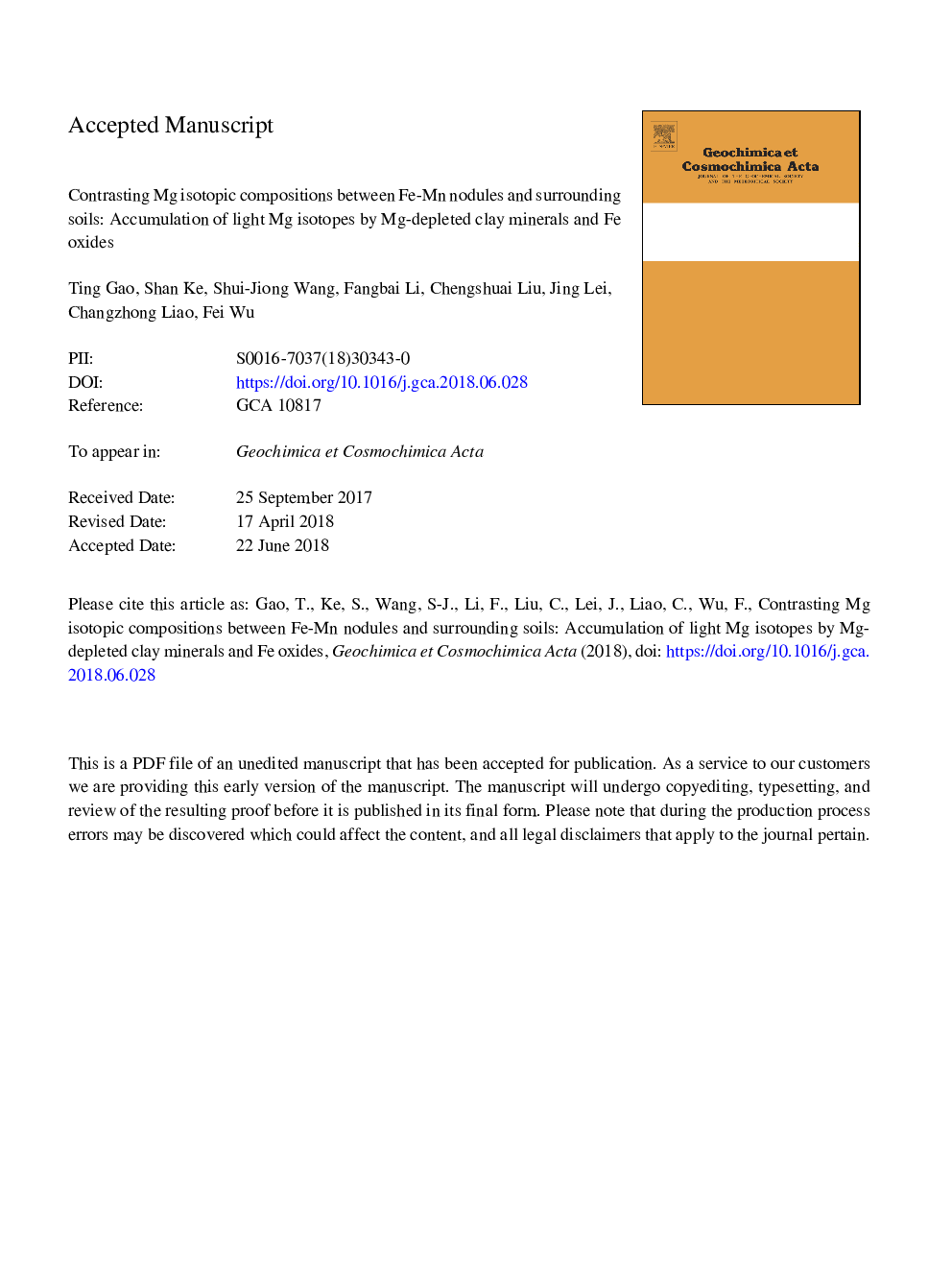| Article ID | Journal | Published Year | Pages | File Type |
|---|---|---|---|---|
| 8910633 | Geochimica et Cosmochimica Acta | 2018 | 47 Pages |
Abstract
Magnesium isotopic systematics has been increasingly used to trace the biogeochemical cycle of Mg in soil systems, and Fe oxides are the critical soil components that affect the geochemical behaviours of elements in soils. The role of Fe oxides in fractionating Mg isotopes, however, remains unclear. Here, Mg isotopic compositions are reported for typical Fe-Mn nodules (FMNs), surrounding soils, soil waters, and soil surface waters for a paddy soil profile, and stream waters, and rainwaters in southwestern China to improve our understanding of the processes that control the Mg isotopic compositions in soil systems. Further sequential extraction experiments are conducted to separate two pools of Mg in the FMNs and soils: structural Mg and exchange Mg. The FMNs (â1.39 to â1.58â°) are isotopically lighter than surrounding soils (â0.59 to â0.85â°) but heavier than soil waters (â1.59â°), and surrounding soils are isotopically lighter than parent granite (â0.25â°). The difference in Mg isotopic compositions between FMNs and surrounding soils reflects different sources of Mg in the mineral crystal structures. Structural Mg in surrounding soils is mainly from the chemical weathering of parent granite. By contrast, structural Mg in FMNs is from soil waters because of the frequently repeated dissolution and precipitation of Fe oxides under alternating redox conditions. Enrichment of heavy Mg isotopes in the FMNs relative to soil waters results from preferential incorporation of 26Mg via Mg2+ substitution for Fe3+ in goethite. Given that the exchangeable Mg (â1.62 to â1.91â°) is significantly enriched in light Mg isotopes, the lighter Mg isotopic compositions in surrounding soils relative to their parent granite can be explained by the retention of light Mg isotopes in exchangeable sites of Mg-depleted minerals (kaolinite). Exchangeable Mg in FMNs (â1.79 to â2.15â°) is also shown to be enriched in light Mg isotopes. These light isotopic compositions of exchangeable Mg can be explained by a combination of carbonate contribution and isotope fractionation processes on the soil exchange fractions. Ion-exchange processes preferentially remove heavy Mg isotopes from soil minerals, leaving soil exchange fractions hosting light Mg isotopes. Additionally, river waters draining carbonates contributes light Mg isotopes to soil exchangeable fractions. Our study demonstrates that the development of Mg-depleted clay minerals and Fe oxides can considerably lower the soil δ26Mg values, highlighting the major roles of these two soil minerals in controlling soil Mg isotopic compositions.
Keywords
Related Topics
Physical Sciences and Engineering
Earth and Planetary Sciences
Geochemistry and Petrology
Authors
Ting Gao, Shan Ke, Shui-Jiong Wang, Fangbai Li, Chengshuai Liu, Jing Lei, Changzhong Liao, Fei Wu,
